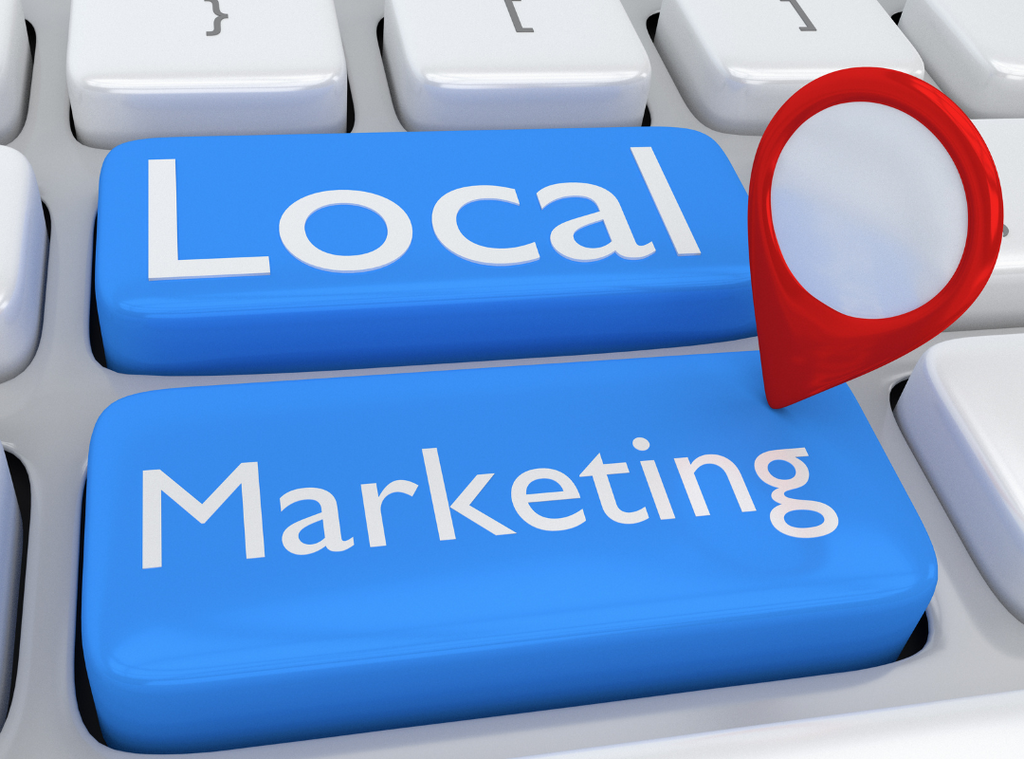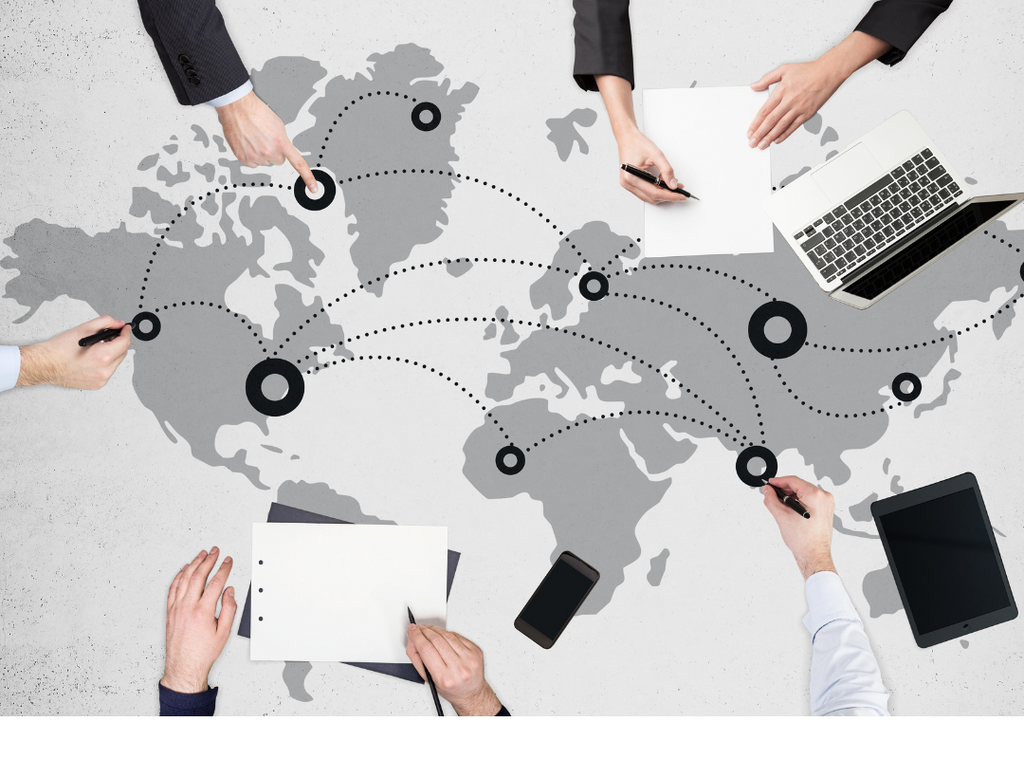How to prioritise content localisation for international markets
- Jo Silverwood
- Read time: 21 minutes

You’ve done the research and decided that international expansion is the best way to drive your business growth to the next level. If the native language in the new market you want to enter differs from yours, you may have already realised a need to localise and translate your website into your target market’s first language. You want to gain trust, credibility, and brand recognition with your new audience.
Congratulations – this is the first step to realising international success. I can’t emphasise enough how important it is to localise your store if you want to succeed at cross-border selling. It is an important decision to invest time and money to get it right, not least when one key global online shopping survey found that 65% of global consumers are much more likely to hand over their hard earned cash when you speak their language. A massive 40% of shoppers online would never even purchase online from a website in another language.
But where to start with website localisation and why is this such an important aspect of any international marketing strategy? And how do you choose which content to prioritise first or at all, especially if you don’t have an unlimited budget or the time to localise every aspect of your store. Read on for our top tips on how to plan and prioritise your website localisation project to make sure you don’t break the bank before you’ve started to see a return on your international expansion investment.
Here's what we'll cover to help you fully understand the intricacies of website localisation with tips to help you build a robust international marketing strategy:
Differences between website translation and localisation
Why is website localisation important?
9 benefits of website localisation
Our 8 step localisation strategy
What is website localisation?
Localisation means adapting your website content to suite local audiences. This is not just website translation. You are essentially adapting your site content to meet the needs and expectations of your target audience, from a linguistic, cultural, and transactional perspective.
Linguistically, this includes translating key content such as your homepage, product descriptions, categories, navigation menus, delivery and returns information, FAQs, checkout, and all other legal content you usually find in the store footer.
Your new audience may hold different customs, cultural and religious values to those of your home country. You may need to review your content for cultural references, idiomatic expressions and imagery which might not make sense to your new audience, or worse, may offend them. This is where cultural content localisation comes into play; adapting it to align with local customs, traditions and sensitivities to ensure it’s culturally appropriate. For example, you wouldn’t promote the sale of alcohol to Middle Eastern countries as this is illegal, nor would you promote white wedding dresses in certain cultures as the colour is associated with death and worn at funerals in China, and some other Asian and Slavic countries.
Ideally, your resulting store content would read as if it were created specifically for that market, rather than a store that looks and feels like it was originally intended for a different country. This means that localisation of a website involves careful thought and attention to detail, as well as a deep knowledge of the culture of the audience you are trying to reach.

Differences between website translation and localisation
Translation is the process of converting your website text from one language to another. This process focusses on linguistic accuracy, to ensure that the translation accurately reflects the message of the original content. Whilst essential to make content accessible to speakers of different languages, it may not address the cultural nuances or differences which could affect how the content is perceived by the target audience.
When it comes to linguistic localisation, we go beyond the words and grammar, adapting content for specific linguistic and cultural contexts to truly connect with the new audience. It involves not only translating the text, but adapting it to resonate with the new audience in terms of language, tone, and style. In addition to text, you may need to modify images, graphics, symbols, colours, and other elements to align with cultural norms and preferences.
You need to consider popular cultural references which won’t mean anything to your target audience. You’ll also need to be mindful of adopting the right tone of voice and avoid using idioms or colloquial phrases that the new audience won’t understand. This is even more important when localising brand names and important sales campaigns that may appear on your homepage or another key landing page. A poorly translated sentence will result in embarrassment and, even worse, could go as far as damaging a brand’s reputation in a new territory - the last thing you want to do when entering a new market.
Coor's beer got this wrong when launching its ‘Turn it loose’ campaign in Spanish-speaking countries. They translated the slogan as “Suffer from Diarrhoea” in Spanish. They completely missed the mark, failing to convey the intended message of enjoying the beer and instead promoted a highly undesirable interpretation. For more examples of when translation goes wrong (usually when brands rely on machine translation alone), take a look at my article on Human vs Machine translation.
The lesson here is to always have a human speaker who is fluent in both the source and the target language proof any machine assisted translation – Google translate is NOT enough and can sometimes be more damaging than having not translated the content from the source language at all.
When it comes to localising slogans, taglines, ad campaign messaging, and other creative marketing content – often called ‘transcreation’ – you should never rely on machine translation tools to get it right. You need the help of an expert translator or specialist transcreator to ensure your brand message or campaign content resonates with the intended audience. You need to avoid damaging your chances of success with poorly translated messaging which could alienate or even offend buyers. The complex and powerful art of transcreation uses a mix of translation, creation, and copywriting to truly capture the brand voice and message in the target language, creating a new piece of content that focusses on the intent of the message, rather than simply translating a piece of text word by word.

Full website localisation also goes much further than the accurate localisation of your linguistic content. You’ll need to consider a wide variety of aspects, from offering different local payment methods, currencies, delivery methods, page design, use of colours, calendar formatting, even imagery. It can be a complex, time-consuming, and expensive. But if you plan your strategy and implement it well, you’ll soon be on your way to reaping the rewards in terms of new customers and sales, and futureproof your business at the same time.
Why is website localisation important?
In today’s online global marketplace, competition to maximise reach and revenue is fierce. It may seem ‘sufficient’ to create a one-size-fits-all store on a global top level domain in English to cater for everyone. Maintaining a single store can be more cost-effective, easy to manage, and you can still sell internationally.
However, often these generic stores are usually not visible to international markets because of their lack of content localisation and lack international SEO which means they don’t meet user intent in organic searches in the target country. Local search engines won’t recognise the store, and even if local potential customers do manage to find it, the content is unlikely to appeal to the local market - especially if they can’t fully understand what the store is selling or read important information like payment methods, taxes, and shipping options. A uniform website may not adequately support local preferences, leading to friction in the checkout process and abandoned baskets. Stores which lack a personalised approach will result in a subpar user experience overall for international users, which reduces customer satisfaction and ultimately hinders sales, loyalty, and repeat custom.
While a one-size-fits all global ecommerce website may offer simplicity and cost savings for the merchant, it may struggle to effectively address the needs of the local audience in new target markets. This leads to challenges, poor performance, and a missed growth opportunity to take a share of a potentially lucrative international market.

9 benefits of website localisation
If done well, a fully localised website can provide a range of benefits to help businesses drive global growth and futureproof their operation internationally. These benefits include:
- Reaching new audiences - driving more traffic to your store to help drive business growth in international markets which may have not been accessible otherwise.
- Better SEO performance -localising your website allows you to optimise content for local search engines and target relevant keywords in the target language that users are searching for to find products similar to yours. This can improve your organic keyword rankings and visibility in local search results, driving more traffic, leads, and sales.
- Increased brand awareness – by localising your content you will be able to reach customers who may never have heard of your brand previously. By using local language, cultural references, and imagery you will make your brand more recognisable and memorable. This usually leads to increased brand loyalty and advocacy which is an important part of internationalisation.
- Better conversion rates - as your site resonates with your new audience in their native language, they are more likely to make a purchase as they feel more comfortable and confident.
- Enhanced user experience - because your site is tailored to their needs and expectations, international audiences can easily navigate to what they are looking for, understand product descriptions, and complete transactions with ease and confidence.
- Increased trust & engagement - driven by a fully localised user experience. If the customer feels like they are getting a personalised experience and can fully understand your pages, blog, newsletter, emails and other content, they are more likely to trust and feel connected to the brand. They will spend more time exploring your store and make a purchase.
- Competitive advantage – you will have the edge over your home country competitors with non-localised stores. You will have positioned yourself as the preferred choice in your chosen market and futureproofed your business against economic downturns in your home country if you have gained market share in other countries.
- Future expansion potential – your first international store will lay the groundwork for future expansion into other countries or markets, making it easier to scale your business globally and create a foundation for continued growth.
- Enhanced domain authority - your website has a search engine quality score, known as the 'DA score', out of 100. This is based on all SEO aspects of your website and determines how likely a website is to rank in search engine results pages (SERPs). The higher the score, the more visible your site will be. This means that if you improve traffic, user experience, conversion rates, and backlinks, this will benefit your content on all language versions and could boost your overall DA score.
Our 8 step content localisation strategy
If you’ve got this far, you will have realised that localising your whole website for international markets is complex and time consuming - there are various types of content to consider localising. Accomplishing this to a good standard needs careful support from specialist translators and international experts with a deep knowledge of the country, language, and the culture of the target market.
The good news is that you don’t need to localise every piece of content you’ve ever published on your website. In fact, some of the content is unlikely to be useful (some could even be detrimental) to your new audience, so you may decide to avoid publishing some content altogether.
There are 8 steps to consider when prioritising which content to localise before launching into any new market.
1. In-depth market research
You really need to know and understand your audience first to know which content is most relevant and influential to them. Get to know demographics, language proficiency, cultural preferences, and buying behaviour.
Which content is most important can vary between markets. While one market may respond well to blog posts in their language, in another market email communications may carry more weight. Do your research and if in doubt, contact a localisation expert who has experience in your target market for the best advice for your product and sector.
It might also be useful to contact your local DIT advisor to gain in-market insights into your specific product or sector. Their international trade advisors can provide country and sector advice, help with market research, identify possible business partners, and help with overseas visits and trade exhibitions. Their digital exporting programme also supports UK eCommerce businesses with all aspects of international exporting.

2. Website metrics
Analyse store and GA4 data to identify which pages, products, and categories obtain the highest traffic and generate the most revenue. This is especially important if you have a very large store and limited budget – you may find that a small percentage of your products are driving the biggest return in your home market, so localising these first could take priority, especially if you are starting in a new market with a proof-of-concept project with limited time and budget. Focus on localising products and categories that drive the most traffic, engagement, and conversions in your home country as a starting point.
Look for patterns in user behaviour, such as pages with high bounce rates or low engagement. This might mean moving these pages further down your priority list for the new market. Monitoring patterns post launch could conversely indicate areas of the site which would benefit from localisation – are users leaving those pages because they are not localised to suit their needs?
3. International search engine visibility
Conduct keyword research in the target language to identify the most relevant search terms used by your target audience in each market. Prioritise localising content around the high-volume keywords and search trends first to improve search engine visibility in your new market.
If you don’t speak the native language, you will need help from a specialist in multi-lingual keyword research who does. They can help either localise your existing English keyword set, or conduct the research from scratch into the target language. It’s not as simple as translating a list of keywords from one language to another, as people in different countries will have different naming conventions for products, and search in different ways.
Identify the key competitors and which keywords their stores are ranking in top positions for. A simple search for some of your key products in the country’s most popular search engine can offer a good starting point. Use this to identify possible competitors who are most visible in the target market from both organic and paid search perspectives. You can then also take a closer look at their stores and take a lead from their navigation menus, product naming conventions, and other content in the target language. Which URLs are they ranking for? Is all of their content localised? It makes sense to focus on top performing native brands in the target market, or famous brands as you would expect these to be fully localised to a high standard.

4. Customer journey analysis
Map out the customer journey on your site, from initial engagement to final conversion. Prioritise content localisation based on each stage of the journey to maximise the impact on conversion rates. Prioritise high-impact pages such as landing pages, product pages, and checkout pages.
Then, depending on time and budget, consider localising supporting content such as client testimonials, FAQs, guides, and blog content. You may decide to launch without the supporting content and add this gradually once the store has started to gain traction and deliver some return on the initial investment. That said, if you have specific user guides and other useful downloadable content, you may wish to add this to your store launch priority list. This can help guide new users to the right product for them, increase your subscriber list, and increase your chances of conversion from launch.

5. Consider your brand messaging
Identify your brand messaging and unique value proposition in the target market, then prioritise localising content that communicates this effectively and resonates with the local audience. You will need to work with a specialist translator or transcreator to localise brand messages, slogans, taglines, and brand storytelling elements to create a strong brand message in your new market.

6. Technical considerations
You may need to consider technical constraints and dependencies when prioritising content localisation. This will also depend on your store platform, how this is configured, and any apps you use and if/how they integrate with any machine assisted translation software you may wish to use. Content driven by some third party apps may not facilitate auto translation, so these could take longer to work on if manual translation, uploading, or additional development support is required to localise certain content. Work closely with your development team to address any potential challenges that could affect the localisation process before you finalise your list of priorities.
7. Specific country regulations
You will need to localise specific content to comply with target market requirements when selling into specific countries. For example, to sell products into the EU, you need to provide specific types of information in the official languages of the country you are selling into. Requirements will vary depending on the product but can include product descriptions, safety information, use and care instructions, ingredients or materials, sizes, dimensions, weight, labelling, warranty information, compliance marks and certification.
Your local DIT advisor can guide you through legal requirements and how to ensure compliance with these regulations.
8. Post launch modifications
Once your site has gone live, it’s good practice to keep an eye on the metrics - monitor your SEO performance and audit after a few weeks to see which content is performing well and which may need further work. Try to gather customer feedback and reviews in each new market. These insights, coupled with your market knowledge, will help you to further prioritise the next aspects of your site to localise - if you haven’t already gone all belt and braces upon launch.
Measuring and adjusting your content localisation will allow you to make data driven decisions to maximise your business growth and ensure success in your chosen market.

Need help with your website localisation?
We hope you find this guide a useful starting point to developing a successful localisation strategy for your store. This serves as a high level overview of how to get localisation right, but who who can know any given culture better than those who are native to that country? Working with professionals who understand your customer's language, culture and behaviour is key. This is where Herd can help. Our localisation experts know how to sell your products and services to the local market, creating the most accurate and localised experience for your store to drive traffic and sales across the globe.
We offer various budget friendly localisation service options tailored to suit different business requirements, budgets, and timeframes. Our website localisation packages range from our hybrid light touch, hybrid robust, and fully comprehensive hybrid options, to human light touch, human robust, and full human localisation.
If you'd like to explore these strategies in greater depth and learn more about how Herd can help you with your website localisation project, get in touch with our team of international experts.
